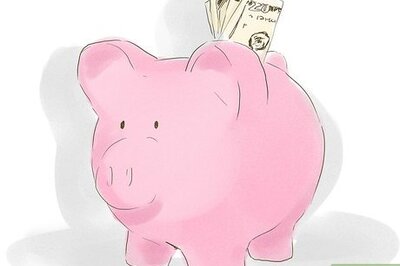
views
WASHINGTON: U.S. consumer prices increased solidly in December amid a surge in the cost of gasoline, though underlying inflation remained tame as the economy battled a raging COVID-19 pandemic that has weighed on the labor market and services industry.
Inflation could, however, briefly accelerate this year as the government provides more money to stimulate the economy, and the consumer price declines early in the coronavirus crisis wash out of the calculations.
But that will unlikely have an impact on the Federal Reserve, which has signaled it would tolerate higher prices after inflation persistently undershot the U.S. central bank’s 2% target. The Fed has slashed interest rates to near zero and is pumping money into the economy through asset purchases.
Economists expect the ultra-easy monetary policy stance to last through at least until 2024.
“We are likely to see a near-term spike in inflation on base effects of a reopening economy in 2021 versus a calamitous period in 2020, but that will fade through the second half of 2021,” said James Knightley, chief international economist at ING in New York. “Longer-term inflation is going to be primarily driven by wage costs given this is a service sector economy.”
The consumer price index increased 0.4% last month after gaining 0.2% in November, the Labor Department said on Wednesday. An 8.4% jump in gasoline prices accounted for more than 60% of the rise in the CPI. Food prices also rebounded. The rise in the CPI was in line with economists’ expectations.
In the 12 months through December, the CPI advanced 1.4% after increasing 1.2% in November. The annual inflation rate is below the 1.7% average over the last 10 years.
Excluding the volatile food and energy components, the CPI edged up 0.1% after climbing 0.2% in November. The so-called core CPI was restrained by decreases in the prices of used cars and trucks, recreation, airfares and healthcare.
The core CPI gained 1.6% on a year-on-year basis, matching November’s rise, and is below the 2.0% average over the past 10 years. The Fed tracks the core personal consumption expenditures (PCE) price index for its inflation target, a flexible average. The core PCE price index is at 1.4%.
The services sector, which accounts for more than two-thirds of the U.S. economy, has been hardest hit by the virus.
Stocks on Wall Street were trading mixed. The dollar rose against a basket of currencies. U.S. Treasury prices were mostly higher.
RENTS MUTED
The government approved nearly $900 billion in additional pandemic relief in late December. More fiscal stimulus is expected from President-elect Joe Biden’s incoming administration and a Congress that will soon be controlled by Democrats.
Biden, who will be sworn in next Wednesday, is expected to unveil a plan this week that will include relief for cash-strapped state and local governments, new support for people who lost their jobs or cannot afford rent, and $2,000 in direct cash payments to many Americans.
Economists have upgraded their growth estimates for this year and U.S. Treasury yields have risen in anticipation of stronger economic growth in the second half of the year.
A survey this month showed a measure of prices paid by manufacturers jumped in December to a 2-1/2-year high, likely reflecting bottlenecks in the supply chain caused by the virus.
“Inventories are unusually lean for this early stage of the cycle and if the vaccination programs are a success, leading to a return to normalcy later this year, the resulting surge in pent-up demand could keep inflation at, or above 2%, in the second half of the year, even after the spring base effects have faded,” said Paul Ashworth, chief U.S. economist at Capital Economics in Toronto.
Other economists expect price pressures to remain benign, arguing that manufacturers have limited capacity to pass on the increased production costs to consumers, with at least 19 million Americans on unemployment benefits. The labor market stress is also seen curbing wage growth, while high rental vacancy rates are likely to restrain rental inflation.
Gasoline prices rebounded 8.4% in December after two straight monthly decreases. Food prices rose 0.4%, with the cost of food consumed at home increasing 0.4%. Prices for food consumed away from home also rose 0.4%.
Owners’ equivalent rent of primary residence, which is what a homeowner would pay to rent or receive from renting a home, edged up 0.1% after being unchanged in November. Many tenants have entered into forbearance agreements with landlords.
Consumers continued to pay less for healthcare, with prices declining for a third straight month. Prices of used cars and trucks also fell for a third straight month. The cost of airline fares tumbled 2.3%, while hotel and motel accommodation prices were unchanged.
But prices for new motor vehicles rose 0.4%. Apparel prices shot up 1.4%. There were also increases in the prices of household furnishings, personal care products and motor vehicle insurance.
“For the Fed, the biggest inflation concern over the next few years will remain inflation that is too low, not too high,” said Gus Faucher, chief economist at PNC Financial in Pittsburgh, Pennsylvania.
Disclaimer: This post has been auto-published from an agency feed without any modifications to the text and has not been reviewed by an editor
Read all the Latest News, Breaking News and Coronavirus News here



















Comments
0 comment